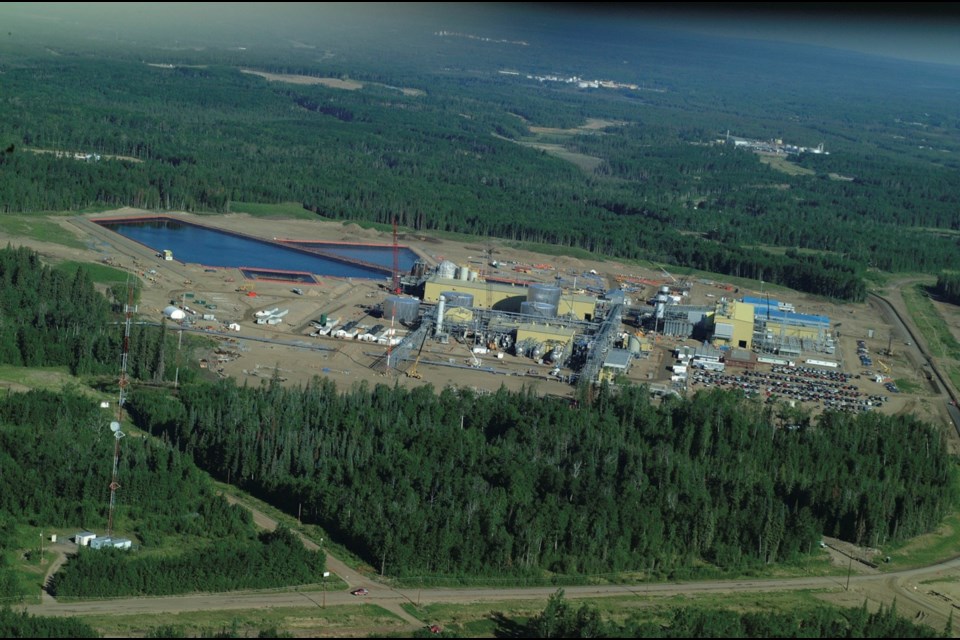LAKELAND – When Imperial Oil purchased land leases 50 km northwest of Cold Lake more than five decades ago in the 1960s, it was believed that the oil reserves were too far underground to see long-term success.
At the time, in situ technology had not yet been invented and it was considered nearly impossible to retrieve bitumen – which has a consistency similar to that of peanut butter – up 400 metres through a vertical well.
Over time and through investment in research and technology, Imperial’s Cold Lake site continues to defy industry norms by extracting oil through one of the largest thermal in situ operations in the world.
In situ recovery refers to wells that are drilled to extract an extra-heavy type of oil referred to as bitumen. Because some bitumen is too dense to flow through a well on its own, heat, steam or fluids are injected to reduce the viscosity or thickness of it, in order for it to flow up the well.
When steam is used to heat the bitumen hundreds of metres underground, it is known as thermal in situ recovery, which is the most common method of extraction.
According to Alberta Energy Regulator (AER), “Around 80 per cent of the oil from Alberta’s oil sands is buried too deep to mine and can be recovered only by drilling wells. That’s where ‘in situ’ recovery comes in.”
Companies must apply and receive AER’s approval before starting any in situ operation in Alberta.
Advances in technology reduce impact
After 45 plus years of continuous production, covering 780 square km and of consisting of 4,600 active wells, Imperial’s Cold Lake site includes five plants - Leming, Maskaw, Mahihkan, Mahkeses and Nabiye – which continue to implement new technology.
“Earlier this year, we started up the Liquid Addition to Steam for Enhanced Recovery (LASER) Project at Cold Lake's Mahkeses plant,” said Lisa Schmidt, the media relations liaison for Imperial Oil Ltd.
The LASER process essentially consists of combining thermal and solvent methods of bitumen extraction in a cyclical mode of operations.
“This latest deployment of Imperial’s enhanced recovery solvent technology improves productivity and is expected to enable up to a 25 per cent greenhouse gas intensity reduction for the associated production,” she added.
To further reduce greenhouse gas emissions, Imperial’s Cold Lake Operations are working on a pilot expansion project in Cold Lake that will use innovative techniques to extract heavy oil.
“This technology is known as SA-SAGD – or Solvent Assisted Steam Assisted Gravity Drainage. This next-generation technology uses lighter oils with less steam to help mobilize the bitumen deposits underground,” explained Schmidt.
The first phase of Cold Lake’s SA-SAGD expansion project is anticipated to start production in 2023 and produce 15,000 barrels per operational day.
She noted, “This approach recovers more heavy oil using less steam, significantly reducing greenhouse gas emissions and water use.”
In 2014 the Alberta government received the final technical report for Imperial’s SA-SAGD pilot project at the Cold Lake site.
The province’s governmental overseers summarized the project in 2015 writing, “The experimental process design for the pilot involves the addition of five to 20 per cent by volume of hydrocarbon solvent (diluent) along with the injected dry steam in a dual horizontal well SAGD configuration, which is intended to result in increased bitumen rates and decreased steam oil ratios relative to the conventional SAGD process.”
The ultimate purpose of this innovation is to reduce environmental impact and to increase efficiencies once the pilot project gets up and running.
“The Cold Lake Operations continues to look for opportunities to reduce freshwater usage and will continue to do so throughout the life of the operations,” states Imperial’s website. “Significant improvements have been captured already, and further improvements in water conservation, efficiency and productivity may be incremental.”
Oil and other byproducts harvested at Cold Lake’s five plants are sent to the Strathcona Refinery and other refineries across Canada and the United States, so that fuel, asphalt and other products can be created.



